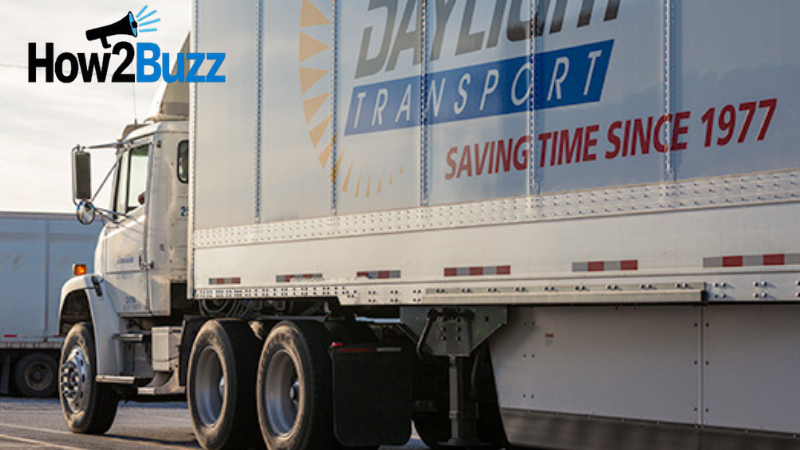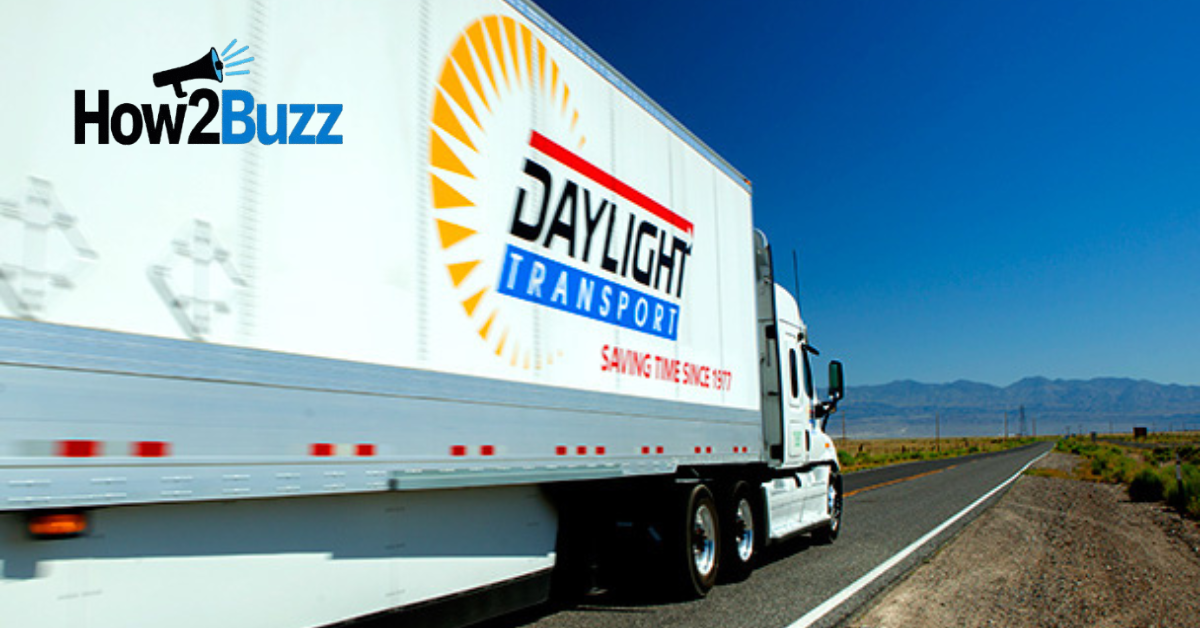When it comes to shipping goods across the country, not all freight solutions are created equal. One term that’s been getting more attention lately is daylight freight—and for good reason. It offers a balance between speed, safety, and cost efficiency that many businesses find hard to ignore.
This method isn’t just a niche approach used by a handful of carriers. It’s a smart shipping strategy built around utilizing daylight hours for transporting goods. That means fewer risks, faster handling, and in some cases, better delivery coordination. Whether you’re a small business looking to streamline your logistics or a large company with daily freight demands, understanding this method could give you a competitive edge.
Why Daylight Freight is Gaining Popularity Among Modern Shippers
Daylight freight is catching on because it addresses several common challenges in traditional freight delivery. For starters, daylight travel avoids the heavy traffic congestion typically associated with early morning and late-night deliveries. Trucks moving during daylight hours are less likely to experience delays from city curfews, rest zone closures, or hazardous night-time driving conditions.
Safety is another huge factor. Let’s face it—accidents are more likely to occur at night due to low visibility and driver fatigue. By keeping most of the travel to daylight hours, carriers can significantly reduce the chances of on-road incidents. This not only keeps drivers safe but also protects the valuable cargo they’re transporting.
In addition to safety and time-efficiency, there’s also the benefit of better customer communication. Daytime operations mean that delivery updates, customer service inquiries, and logistics support are more accessible since most offices operate during standard business hours. This alignment improves overall transparency in the shipping process.
Daylight Freight Solutions for B2B and B2C Businesses
Many companies—both B2B and B2C—are turning to daylight freight services to improve their logistics. In the business-to-business space, manufacturers often rely on consistent and predictable delivery windows to avoid downtime in their supply chains. Daylight freight services, with their structured daytime operations, fit this model perfectly.
For B2C companies, especially those dealing with time-sensitive goods like perishables, pharmaceuticals, or high-value electronics, daylight shipping reduces the risk of delays and damages. Customers are more likely to be available for daytime deliveries, reducing failed delivery attempts and improving the end-user experience.
It’s not just about what’s being shipped—it’s also about the customer journey. Fast, reliable shipping during standard hours can help reinforce your brand’s reputation and keep your customers coming back. In today’s world of Amazon Prime expectations, delivery reliability is almost as important as the product itself.
How Daylight Freight Improves Efficiency and Lowers Costs
Efficiency is key in any logistics operation, and daylight freight supports that goal in multiple ways. Since vehicles are on the road during optimal visibility and less risky driving conditions, wear and tear on the fleet tends to be lower. That translates into fewer maintenance issues and lower repair costs.
From a fuel consumption perspective, daylight driving can also be more efficient. Drivers are more alert and less likely to idle for extended periods due to accidents or night-time slowdowns. Over time, this can contribute to significant fuel savings, especially for companies with large fleets.
Additionally, labor costs can be optimized. Because daylight shipping aligns with standard working hours, companies don’t have to pay as much overtime or offer night-shift differentials. This makes the operation more sustainable financially and easier to manage from an HR perspective.
What Makes Daylight Freight Different from Traditional Freight Shipping?
At a glance, daylight freight might seem like a minor variation of traditional freight methods. However, it’s a strategic shift that emphasizes optimized planning, better time usage, and proactive risk reduction. Most traditional freight systems focus on getting goods from point A to point B regardless of the time, often ignoring the conditions in between.
By focusing on daytime hours, carriers are more in control of their routes and schedules. They can better predict traffic, weather patterns, and road closures. This predictability is a huge win for clients who value consistency in their deliveries.
It also changes the dynamic between shipper and receiver. Because freight arrives during regular hours, it allows for smoother unloading, better staffing, and overall better coordination between departments. No more scrambling for an after-hours crew to receive goods or leaving packages vulnerable overnight.
How to Choose the Right Daylight Freight Partner
Choosing the right daylight freight partner involves more than just picking the cheapest quote. You want a provider that understands the importance of timing, safety, and customer experience. Look for companies that specialize in daytime delivery windows and have a proven track record in your industry.
Reputation matters here. Ask for references, read reviews, and look into how the carrier handles communication during transit. Are they proactive about updates? Can they reroute efficiently if an issue arises? These details make a big difference when the pressure is on.
Also, don’t be afraid to ask about their fleet and driver support systems. Daylight operations might seem simpler, but they still require top-tier planning, GPS tracking, and vehicle maintenance to function smoothly. A great partner will be transparent about their systems and how they support your freight needs.
Environmental Benefits of Daylight Shipping
One overlooked aspect of daylight freight is its potential environmental advantage. Because daytime deliveries often reduce idle time and increase fuel efficiency, they contribute to lower carbon emissions. In an age where sustainability is a growing concern, this is more than just a bonus—it’s a necessity.
Many logistics companies are being pushed to show their green credentials. Partnering with a daylight freight service can be part of a broader sustainability initiative. Whether you’re a manufacturer or retailer, this can be a valuable marketing tool as well as a practical strategy.
Furthermore, when routes are better optimized due to predictable daylight conditions, it results in fewer miles driven, less fuel burned, and lower overall emissions. The cumulative impact across a year of shipments is more significant than many realize.
Real-World Use Cases of Daylight Freight Success

Several industries have already embraced daylight freight with excellent results. Take the food and beverage sector, for instance. Delivering fresh goods during daylight ensures products get to shelves faster and safer, minimizing spoilage and boosting shelf life.
The tech industry also benefits from secure daylight delivery. Expensive electronics are safer when transported and delivered during business hours, reducing the risk of theft or damage that can occur overnight. Plus, real-time updates give suppliers and customers peace of mind.
Even in the healthcare sector, where precision and timing are critical, daylight shipments of medical supplies or lab samples have become standard practice. The reliability and predictability of this freight method help maintain compliance and ensure that services run without disruption.
The Future of Daylight Freight in a Digital World
Looking ahead, the future of daylight freight is closely tied to technology. With real-time tracking, route optimization software, and smart logistics platforms, carriers can now make even more out of their daylight delivery windows. This means faster deliveries, fewer errors, and happier customers.
AI and machine learning are being integrated to further refine delivery routes, monitor driver behavior, and reduce waste in transit. As these tools become standard, expect daylight freight to become more personalized and more efficient than ever before.
And with the continued growth of eCommerce, demand for faster and more predictable delivery services isn’t going anywhere. Daylight freight is well-positioned to meet this demand while keeping costs manageable and operations smooth.
Conclusion
Daylight freight is more than just a logistics trend—it’s a strategic move for businesses looking to improve delivery speed, reduce risks, and lower costs. With the added benefits of better fuel efficiency, environmental friendliness, and improved customer satisfaction, it’s easy to see why so many industries are making the switch.
If you’re a business owner or logistics manager, it might be time to rethink how your freight moves. A reliable daylight freight solution could be the edge your operations need in an increasingly competitive market.
Frequently Asked Questions
What is daylight freight?
Daylight freight refers to the transportation of goods primarily during daylight hours. It focuses on improving safety, speed, and customer satisfaction by avoiding night-time travel risks.
Is daylight freight more expensive than regular freight?
Not necessarily. While it may seem premium, it often saves money over time by reducing maintenance, fuel, and labor costs associated with overnight shipping.
Who benefits the most from daylight freight?
Industries that handle time-sensitive, fragile, or high-value items such as healthcare, electronics, and food benefit the most from daylight freight services.
Is daylight freight suitable for long-distance shipping?
Yes. Many carriers plan long-haul routes that operate during daylight only by using strategic stopovers. It helps maintain safety and timing standards.
How can I find a good daylight freight provider?
Look for a company with experience in daytime logistics, a solid reputation, strong customer support, and proven tracking technology.



